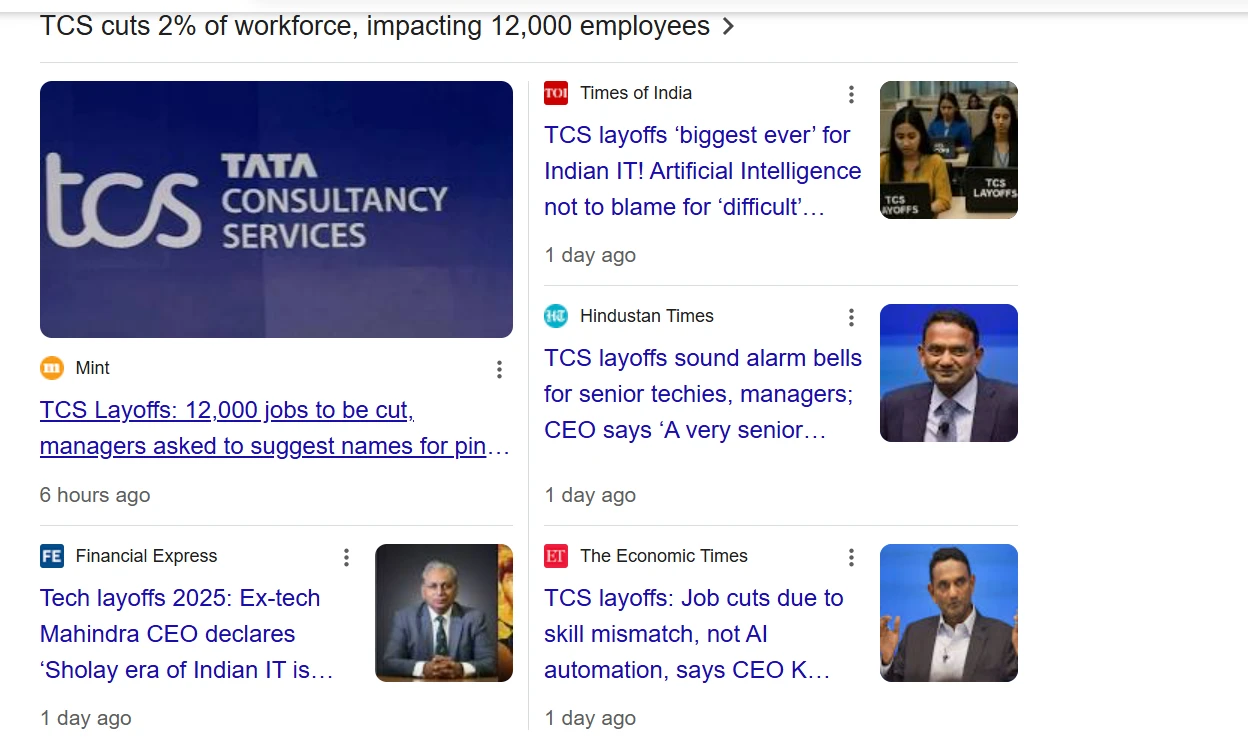
i
TCS
Filter interviews by
TCS Java Developer Interview Questions and Answers
226 Interview questions
Bean scope in Java includes singleton, prototype, request, session, and application scopes.
Singleton scope: Default scope, only one instance per Spring container.
Prototype scope: New instance created each time bean is requested.
Request scope: Bean created for each HTTP request.
Session scope: Bean created for each HTTP session.
Application scope: Bean created once for entire web application.
Spring Boot annotations are used to simplify the development process by providing shortcuts for common tasks.
Annotations like @SpringBootApplication, @RestController, @Autowired, @GetMapping, @PostMapping are commonly used in Spring Boot applications.
These annotations help in configuring the application, defining REST endpoints, injecting dependencies, and mapping HTTP requests to controller methods.
For example, @...
HashMap is non-synchronized and allows null values, while Hashtable is synchronized and does not allow null keys or values.
HashMap is non-synchronized, meaning it is not thread-safe, while Hashtable is synchronized and thread-safe.
HashMap allows null values and one null key, while Hashtable does not allow null keys or values.
HashMap is generally preferred for non-thread-safe applications, while Hashtable is used i...
Java is a versatile programming language used for developing a wide range of applications, from web and mobile apps to enterprise software.
Java is used for developing web applications, such as online banking systems and e-commerce websites.
It is commonly used for creating mobile applications for Android devices.
Java is also used for developing enterprise software, like customer relationship management (CRM) system...
What people are saying about TCS





JVM stands for Java Virtual Machine, which enables Java applications to run on any device by providing an environment for execution.
JVM is part of the Java Runtime Environment (JRE).
It converts Java bytecode into machine code for execution.
JVM provides platform independence, allowing Java programs to run on any OS.
It manages memory through garbage collection, optimizing resource usage.
Example: A Java program compi...
The main difference between PUT and PATCH methods in Spring Boot is the level of data that is updated.
PUT method is used to update an entire resource, while PATCH method is used to update only specific fields of a resource.
PUT method requires the client to send the entire updated resource, while PATCH method only requires the client to send the specific fields that need to be updated.
PUT method is idempotent, mean...
Abstract classes can have both abstract and concrete methods, while interfaces can only have abstract methods (Java 8+ allows default methods).
Abstract classes can have instance variables; interfaces cannot.
A class can extend only one abstract class but can implement multiple interfaces.
Abstract class example: 'abstract class Animal { abstract void sound(); }'
Interface example: 'interface Animal { void sound(); }'
...
Spring Boot is a Java-based framework that simplifies the development of stand-alone, production-grade Spring applications.
Convention over configuration: Reduces the need for extensive configuration files.
Embedded servers: Supports embedded servers like Tomcat and Jetty for easy deployment.
Microservices ready: Ideal for building microservices architectures with minimal setup.
Spring Boot Starter: Provides a set of ...
Java is a high-level programming language known for its portability, security, and versatility.
Java is an object-oriented language, meaning it focuses on creating objects that interact with each other.
It is platform-independent, meaning Java programs can run on any device that has a Java Virtual Machine (JVM).
Java is known for its security features, such as automatic memory management and built-in exception handli...
Java8 introduced several new features including lambda expressions, functional interfaces, streams, and default methods.
Lambda expressions allow for more concise code by enabling functional programming.
Functional interfaces are interfaces with a single abstract method, such as Runnable or Comparator.
Streams provide a way to process collections of objects in a functional style.
Default methods allow interfaces to ha...
TCS Java Developer Interview Experiences
199 interviews found
I appeared for an interview in Dec 2024.
(22 Questions)
- Q1. API Gateway implementation
- Ans.
API Gateway implementation is a centralized service that routes, manages, and secures API calls.
API Gateway acts as a single entry point for all API calls
It can handle authentication, rate limiting, caching, and request/response transformations
Examples include AWS API Gateway, Apigee, Kong
- Q2. Circuit breaker implementation
- Ans.
Circuit breaker is a design pattern used to prevent system overload by temporarily stopping requests to a failing service.
Circuit breaker monitors requests to a service and opens when the service fails repeatedly.
It helps prevent cascading failures and allows the system to gracefully degrade.
Once the circuit breaker is open, it can periodically check if the service has recovered before allowing requests again.
- Q3. What is deadlock? How to avoid it?
- Ans.
Deadlock is a situation in which two or more processes are unable to proceed because each is waiting for the other to release a resource.
Avoid circular wait by ensuring processes request resources in the same order.
Prevent hold and wait by requiring processes to request all needed resources at once.
Implement a timeout mechanism to break potential deadlocks.
Use resource allocation graphs to detect and prevent deadlocks.
...
- Q4. Explain equals() method
- Ans.
The equals() method is used to compare the contents of two objects for equality.
The equals() method is a method of the Object class in Java.
It is used to compare the contents of two objects for equality.
The default implementation of equals() in the Object class compares memory addresses, so it is often overridden in custom classes to compare content.
Example: String class overrides equals() method to compare the content...
- Q5. How mongodb was integrated in your application?
- Ans.
MongoDB was integrated in the application by using the official Java driver and configuring connection settings.
Used the official MongoDB Java driver to interact with the database
Configured connection settings such as host, port, database name, and authentication credentials
Implemented CRUD operations using MongoDB Java driver methods
Utilized MongoDB aggregation framework for complex queries
- Q6. What is hibernate?
- Ans.
Hibernate is an object-relational mapping (ORM) framework for Java that simplifies database interactions.
Hibernate maps Java classes to database tables, allowing developers to work with Java objects instead of SQL queries.
It provides a powerful query language called HQL (Hibernate Query Language) that is similar to SQL but operates on objects.
Hibernate supports various database systems, making it versatile for differen...
- Q7. Runnable vs Callable interface
- Ans.
Runnable is a functional interface with a single run() method, while Callable is a functional interface with a single call() method.
Runnable is used for tasks that do not return a result, while Callable is used for tasks that return a result.
Callable can throw checked exceptions, while Runnable cannot.
Callable returns a Future object, which can be used to retrieve the result of the computation.
Example: Runnable - execu...
- Q8. Which type of data is returned by Callable interface?
- Ans.
The Callable interface in Java returns a Future object.
Callable interface returns a Future object which represents the result of a computation that may not be available yet.
The Future object can be used to retrieve the result of the computation, check if it is done, or cancel the computation.
Example: Callable<Integer> task = () -> { return 42; }
- Q9. HashMap internal working
- Q10. Concurrent HashMap internal working
- Ans.
ConcurrentHashMap allows concurrent access and updates, ensuring thread safety without locking the entire map.
Uses a segmented locking mechanism to allow multiple threads to read and write concurrently.
Divides the map into segments, each with its own lock, reducing contention.
Supports operations like put, get, and remove without blocking the entire map.
Example: Inserting elements in a multi-threaded environment allows ...
- Q11. How to monitor health of your application?
- Ans.
Monitor application health using metrics, logs, alerts, and performance monitoring tools.
Use monitoring tools like Prometheus, Grafana, or New Relic to track key metrics such as CPU usage, memory usage, response times, and error rates.
Implement logging to record important events and errors in your application. Use tools like ELK stack (Elasticsearch, Logstash, Kibana) for log analysis.
Set up alerts to notify you of any...
- Q12. How to call an API in a Microservice architecture?
- Ans.
To call an API in a Microservice architecture, use HTTP requests or messaging protocols like gRPC.
Use HTTP requests to communicate between microservices
Implement RESTful APIs for easy integration
Leverage messaging protocols like gRPC for efficient communication
Consider using service discovery mechanisms for dynamic API calls
- Q13. Explain Profiles
- Ans.
Profiles in Java are configurations that define the capabilities of a Java platform.
Profiles allow developers to target specific types of devices or applications.
They help in reducing the size of the Java runtime environment by including only the necessary APIs.
Examples include Java SE Embedded Profile for embedded devices and Java SE Compact Profile for resource-constrained environments.
- Q14. What is OpenFeign, and how is it used in microservices architecture?
- Ans.
OpenFeign is a declarative web service client used to simplify the process of making HTTP requests in microservices architecture.
OpenFeign allows developers to define RESTful web services as interfaces and automatically generate the necessary implementation code.
It integrates seamlessly with Spring Cloud and other microservices frameworks to facilitate communication between services.
OpenFeign supports features like loa...
- Q15. What is the implementation process for service registry and discovery?
- Ans.
Service registry and discovery involves registering services and allowing clients to discover and connect to them.
Implement a service registry where services can register themselves with metadata
Use a service discovery mechanism for clients to find and connect to services
Implement health checks to ensure services are available and healthy
Use a load balancer to distribute traffic among multiple instances of a service
- Q16. What are Spring boot actuators?
- Ans.
Spring Boot Actuators are built-in tools that provide insight into the running application.
Actuators expose various endpoints to monitor and manage the application.
They can be used to check health, metrics, environment details, and more.
Examples include /actuator/health, /actuator/metrics, and /actuator/env.
- Q17. Synchronous vs Asynchronous communication
- Ans.
Synchronous communication is blocking, while asynchronous communication is non-blocking.
Synchronous communication waits for a response before continuing, while asynchronous communication does not wait.
Examples of synchronous communication include traditional function calls, while examples of asynchronous communication include callbacks and promises.
Synchronous communication can lead to performance issues if there are d...
- Q18. Explain Synchronized keyword
- Ans.
Synchronized keyword is used in Java to control access to shared resources by multiple threads.
Synchronized keyword can be applied to methods or code blocks to ensure only one thread can access the synchronized code at a time.
It prevents race conditions and ensures thread safety by creating a lock on the object or class.
Example: synchronized void myMethod() { // synchronized code block }
- Q19. What are the consequences of excessively using synchronized blocks and methods in Java?
- Ans.
Excessive use of synchronized blocks and methods in Java can lead to performance issues and potential deadlocks.
Decreased performance due to increased contention for locks
Potential deadlocks if multiple threads are waiting for each other to release locks
Increased complexity and difficulty in debugging and maintaining code
Use synchronized sparingly and consider alternatives like ConcurrentHashMap or Lock interface
- Q20. How can you determine the number of threads needed for your application?
- Ans.
The number of threads needed for an application can be determined based on factors like the type of tasks, hardware resources, and performance requirements.
Consider the type of tasks your application needs to perform - CPU-bound tasks may benefit from more threads, while I/O-bound tasks may not.
Take into account the hardware resources available - more threads may be beneficial on a multi-core processor compared to a si...
- Q21. Explain Executor framework
- Ans.
Executor framework is a framework in Java that provides a way to manage and execute tasks asynchronously.
Allows for managing thread execution in a more efficient way
Provides a way to decouple task submission from task execution
Supports various types of executors like ThreadPoolExecutor and ScheduledExecutorService
Helps in handling tasks concurrently and asynchronously
- Q22. Explain BlockingQueue
- Ans.
BlockingQueue is an interface in Java that represents a queue which supports operations that wait for the queue to become non-empty when retrieving an element and wait for space to become available in the queue when adding an element.
BlockingQueue is part of the java.util.concurrent package.
It is used for implementing producer-consumer scenarios where multiple threads are involved.
Methods like put() and take() are used...
(2 Questions)
- Q1. Why did you leave your previous company?
- Ans.
Seeking new challenges and opportunities for growth.
Desire for career advancement
Looking for new challenges
Seeking better work-life balance
Company restructuring or downsizing
Relocation to a new area
- Q2. Other basic questions asked regarding the relevant skills and technologies I have worked with.
Skills evaluated in this interview
I appeared for an interview in Jan 2025.
(3 Questions)
- Q1. Wat are containers in SpringBoot
- Q2. How will you fetch the 10 data in Spring boot
- Q3. Exceptions Priority
I applied via Recruitment Consulltant and was interviewed in Dec 2024. There was 1 interview round.
(2 Questions)
- Q1. Java basics on various OOPS cincept
- Q2. Unit test code
- Ans.
Unit testing in Java ensures code reliability and helps catch bugs early in the development process.
Use JUnit framework for writing unit tests. Example: @Test annotation for test methods.
Mock dependencies using Mockito to isolate the unit being tested. Example: Mockito.when(...).thenReturn(...).
Follow the Arrange-Act-Assert pattern for structuring tests. Example: Arrange inputs, Act by calling the method, Assert the ex...
Interview Preparation Tips
- Spring Boot
- REST API
- java 8
I applied via Job Portal
(2 Questions)
- Q1. Hashmap and multi thread
- Q2. Jpa entirety related
(2 Questions)
- Q1. Deep technical and work experience
- Q2. Domain knowledge
I appeared for an interview in Dec 2024.
(2 Questions)
- Q1. What is a classLoader?
- Q2. What is Polymorphism?
(2 Questions)
- Q1. Why do you want to Join Tcs?
- Q2. What is the most challenging thing you have done so far?
I applied via Referral and was interviewed in Jul 2024. There were 2 interview rounds.
(11 Questions)
- Q1. Internal working of HashMap
- Ans.
HashMap is a data structure that stores key-value pairs and uses hashing to efficiently retrieve values based on keys.
HashMap internally uses an array of linked lists to store key-value pairs.
When a key-value pair is added, the key is hashed to determine the index in the array where it will be stored.
If multiple keys hash to the same index, a linked list is used to handle collisions.
HashMap allows one null key and mult...
- Q2. Features of java8
- Ans.
Java 8 introduced new features like lambda expressions, streams, default methods, and functional interfaces.
Lambda expressions allow you to write code in a more concise way.
Streams provide a way to work with sequences of elements.
Default methods allow interfaces to have method implementations.
Functional interfaces have a single abstract method and can be used with lambda expressions.
- Q3. Use of synchronized keyword
- Ans.
The synchronized keyword in Java is used to control access to shared resources by allowing only one thread to execute a synchronized block of code at a time.
Synchronized keyword can be used with methods or blocks of code to ensure thread safety.
It can be used to prevent race conditions and ensure data consistency in multi-threaded applications.
Example: synchronized void myMethod() { // synchronized method implementatio...
- Q4. Difference between failsafe and fail fast and also its implementation
- Ans.
Fail fast stops the program immediately upon encountering an error, while failsafe allows the program to continue running despite errors.
Fail fast: Stops program immediately upon error to prevent further damage. Example: NullPointerException in Java.
Failsafe: Allows program to continue running despite errors. Example: using try-catch blocks to handle exceptions.
- Q5. Coding question : sort an array, use of streams to find names from employee object whose salary is greater than 50000
- Ans.
Sort an array and use streams to find names of employees with salary > 50000
Sort the array using Arrays.sort() method
Use streams to filter employee objects with salary > 50000
Map the filtered employee objects to their names
- Q6. Difference between concurrent and generic collection
- Q7. What is string pool. What is string literal?
- Ans.
String pool is a memory area in Java heap where unique string literals are stored.
String pool is a part of Java heap memory where unique string literals are stored.
String literals are created using double quotes, e.g. "hello".
Strings created using the same literal will reference the same object in the string pool.
String pool helps in saving memory by reusing common string literals.
- Q8. Security measures used in your project
- Q9. What is difference between rest and soap
- Ans.
REST is an architectural style for distributed hypermedia systems, while SOAP is a protocol for exchanging structured information in web services.
REST is lightweight and uses standard HTTP methods like GET, POST, PUT, DELETE, while SOAP uses XML for message format and relies on protocols like HTTP, SMTP, etc.
REST is stateless, meaning each request from a client to server must contain all the information needed to under...
- Q10. What do u mean by REST state
- Ans.
REST state refers to the state of a resource in Representational State Transfer architecture.
REST state is the current status of a resource in a RESTful system.
It includes data such as resource attributes, relationships, and links.
REST state is represented in the form of URIs, HTTP methods, and representations.
It allows clients to interact with resources by manipulating their state.
Example: In a RESTful API, the state ...
- Q11. What is serialization? What is the way to stop serialization?
- Ans.
Serialization is the process of converting an object into a stream of bytes to store or transmit it. To stop serialization, mark a field as transient.
Serialization is used to save the state of an object and recreate it when needed.
To stop serialization of a field, mark it as transient in the class.
Example: private transient int sensitiveData;
(4 Questions)
- Q1. Difference between failsafe and faifast
- Q2. Difference between concurrent and generic collection
- Q3. Security measures used in current project
- Q4. Why you are leaving your current organization and follow up questions on that
Interview Preparation Tips
Skills evaluated in this interview
I applied via Referral and was interviewed in Nov 2024. There was 1 interview round.
(2 Questions)
- Q1. Self introduction
- Q2. Write code structure from controller to jpa class
- Ans.
A structured approach to connect a controller to a JPA entity in a Java application.
1. Create a REST Controller: Define endpoints using @RestController annotation.
2. Service Layer: Implement business logic in a service class annotated with @Service.
3. Repository Layer: Use Spring Data JPA repository interface for database operations.
4. JPA Entity: Define a class annotated with @Entity representing the database table.
5....
Skills evaluated in this interview
(1 Question)
- Q1. Which version of JDK is your project using? How do you set JDK version of your project? Which Springboot version are you using in your project? Where and how will you specify settings for your project? Wha...
- Ans.
Our project is using JDK 11. We set JDK version in pom.xml. We are using Springboot version 2.5.4. Settings are specified in application.properties. We use Maven as build tool and JUnit for testing.
JDK 11 is specified in pom.xml file of the project
Springboot version 2.5.4 is used in the project
Settings for the project are specified in application.properties file
Maven is used as the build tool for the project
JUnit is us...
Interview Preparation Tips
(2 Questions)
- Q1. Hash map vs hashMap table
- Ans.
HashMap is non-synchronized and allows null values, while hash table is synchronized and does not allow null values.
HashMap is non-synchronized and not thread-safe, while hash table is synchronized and thread-safe.
HashMap allows null values and one null key, while hash table does not allow null keys or values.
HashMap is generally preferred for non-thread-safe applications, while hash table is used in thread-safe applic...
- Q2. Transient keyword, synchronisation, Java 8 features
Skills evaluated in this interview
(2 Questions)
- Q1. What is the concept of Object-Oriented Programming (OOP)?
- Ans.
OOP is a programming paradigm based on the concept of objects, which can contain data in the form of fields and code in the form of procedures.
OOP focuses on creating objects that interact with each other to solve problems.
Encapsulation: Objects can hide their internal state and require interaction through defined interfaces.
Inheritance: Objects can inherit attributes and methods from other objects.
Polymorphism: Object...
- Q2. What is an interface in the context of programming?
- Ans.
An interface in programming is a blueprint of a class that defines a set of methods that a class must implement.
Interfaces in Java are used to achieve abstraction and multiple inheritance.
Interfaces contain only method signatures, not method bodies.
Classes can implement multiple interfaces but can only extend one class.
Example: interface Shape { void draw(); }
Example: class Circle implements Shape { public void draw() ...
Interview Preparation Tips
TCS Interview FAQs
Some of the top questions asked at the TCS Java Developer interview -
The duration of TCS Java Developer interview process can vary, but typically it takes about less than 2 weeks to complete.
Tell us how to improve this page.
TCS Interviews By Designations
- TCS System Engineer Interview Questions
- TCS Software Developer Interview Questions
- TCS Software Engineer Interview Questions
- TCS Assistant System Engineer Interview Questions
- TCS Assistant System Engineer Trainee Interview Questions
- TCS IT Analyst Interview Questions
- TCS Ninja Interview Questions
- TCS Java Developer Interview Questions
- Show more
Interview Questions for Popular Designations
Overall Interview Experience Rating
based on 192 interview experiences
Difficulty level
Duration
Top Skills for TCS Java Developer






Interview Questions from Similar Companies
TCS Java Developer Reviews and Ratings
based on 662 reviews
Rating in categories
|
System Engineer
1.1L
salaries
| ₹3.9 L/yr - ₹8.3 L/yr |
|
IT Analyst
65.1k
salaries
| ₹7.9 L/yr - ₹14.6 L/yr |
|
AST Consultant
54.3k
salaries
| ₹12.6 L/yr - ₹23.4 L/yr |
|
Associate Consultant
33.8k
salaries
| ₹15.3 L/yr - ₹28.5 L/yr |
|
Assistant System Engineer
33.2k
salaries
| ₹2.4 L/yr - ₹6.2 L/yr |

Amazon

Wipro

Infosys

Accenture
- Home >
- Interviews >
- TCS Interview Questions
















